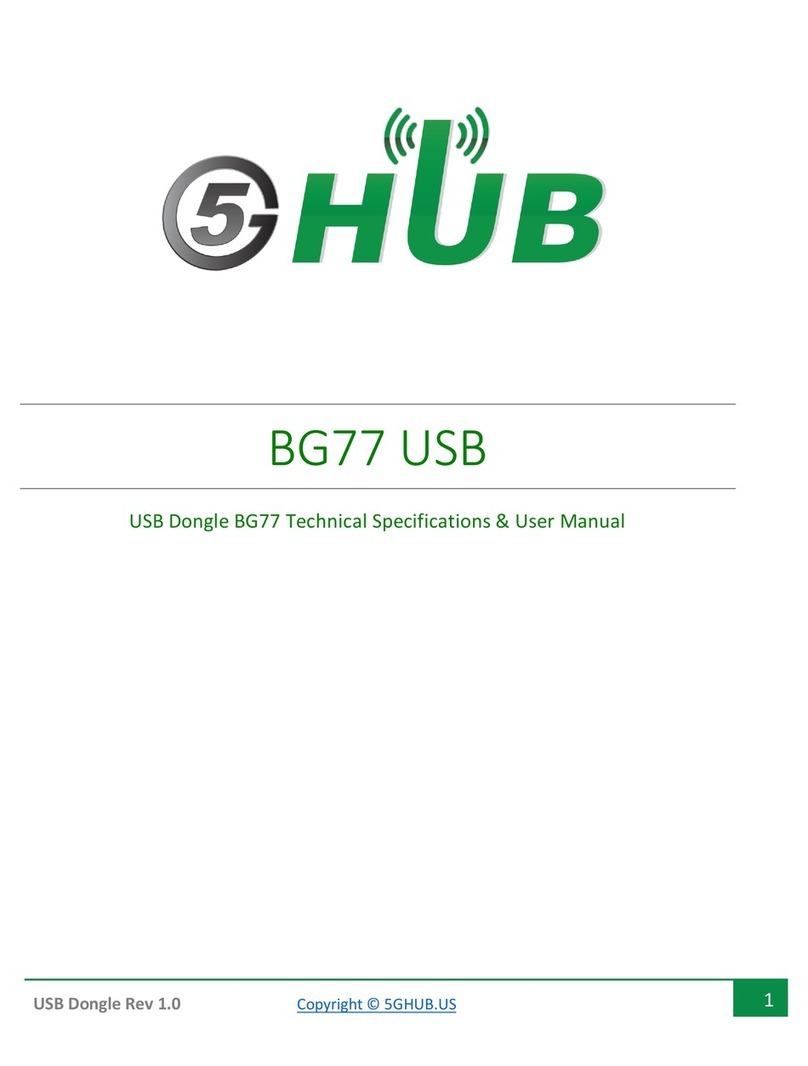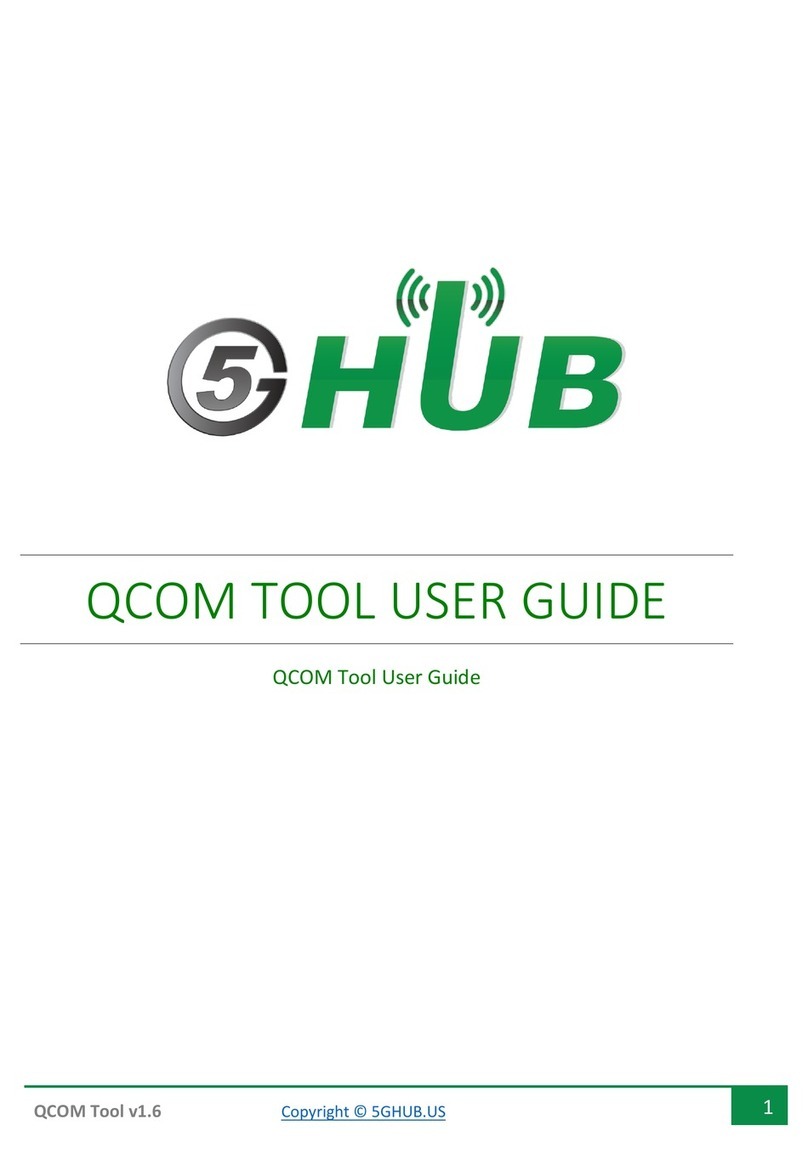
USB Dongle Rev 1.0 Copyright © 5GHUB.US
2General Description
2.1 Overview
The NB-IoT USB dongle is a cellular USB stick form factor based on Quectel BC660 chipset. BC660 is a high-
performance NB-IoT module with extremely low power consumption.
The USB dongle has on-board LTE antennas. It features a wireless modem. The wireless modem is BC660
which is an embedded IoT (LTE Cat-NB2) wireless communication module. BC660 wireless modem
provides a maximum data rate of 127Kbps downlink and 158.5Kbps uplink. It features ultra-low power
consumption, provides data connectivity on LTE/5G networks, and supports half-duplex FDD operation in
LTE networks.
The USB dongle provides rich sets of Internet protocols, industry-standard interfaces
(USB/UART/SPI/ADC/GPIO/RI/Status Indicator) and abundant functionalities. The board offer a high
integration level and enables integrators and developers to easily design their applications and take
advantage of the board low power consumption, many functionalities, and USB drivers for Windows
7/8/8.1/10, Linux and Android.
The USB dongle is a rich hardware board that can be used for the 4G LTE wireless technology and enables
a variety of smart applications for devices. It enables large number of applications such as wireless POS,
smart metering, tracking, smart transportation, smart buildings, smart city, smart homes, bike sharing,
smart wearables, smart parking, home appliances, security and asset tracking, agricultural and
environmental monitoring.
2.2 Key Features
•Quectel BC660 Cat NB2 module
•Data rate of 127Kbps downlink and 158.5Kbps uplink
•On-board LTE antenna
•Supports LTE NB-IoT Cat NB2
•Global Frequency Band B1/B2/B3/B4/B5/B8/B12/B13/B17/B18/B19/B20/B25/B28/B66/B70/B85
•Supports the protocols TCP/UDP/PPP/ SSL/ TLS/ FTP(S)/ HTTP(S)/ NITZ/ PING/ MQTT
•Supports SMS
•Compact board size of 59mm x 25mm
•Nano USIM card slot
•Works with Windows, Linux, or Android
•Ready for smart wearables, smart applications, and development (smart home, smart city, smart
transportation, smart metering, smart farming, smart waste management, asset tracking,
location, navigation, mapping, and timing applications). Application such as Gas Detector, Soil
PH Tester, Optical Sensor, Machinery Alarm System, Irrigation Controller, Elevator, Asset
Tracking Electronics, Person/Pet Tracking, Water/Gas Metering, Smart Parking System, Fire
Hydrant, Smoke Alarm, Trash Bin, Street Lighting
•The board is powered via the USB connector
•Interfaces with external sensors through UART. Each of the general purpose I/O pins
on the board can be used for digital input or digital output.





























